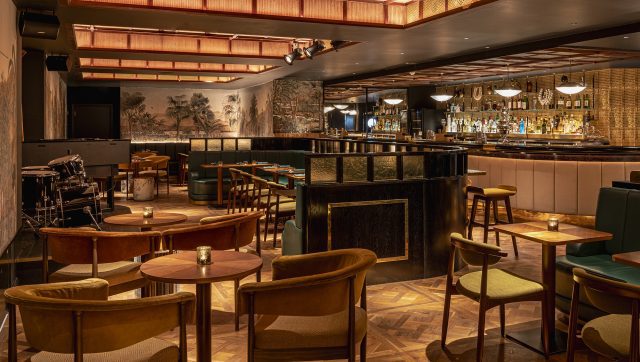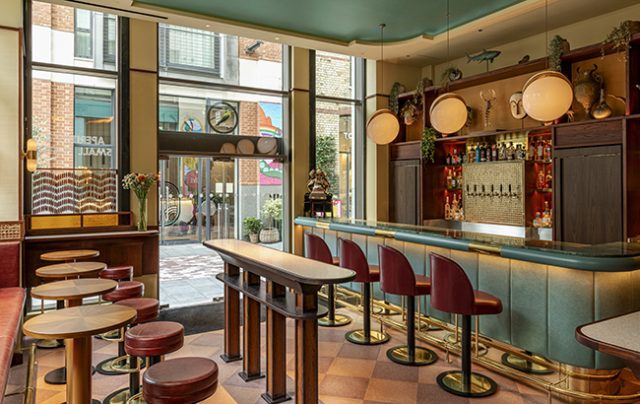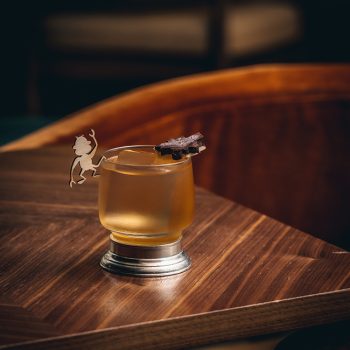How Oriole took flight again
By Lauren BowesLondon favourite Oriole moved from Smithfield to Covent Garden, and has reinvented itself while keeping the approach that made it a firm favourite with the capital’s drinkers.

*This feature was originally published in the December 2024 issue of The Spirits Business magazine.
When one door closes, another one opens. While it’s a pretty saying, it usually isn’t the case, especially for bars. Fortunately for the team at Oriole – as well as its fanbase – the closure of the London bar’s Smithfield Market site led to the opening of a new one in Covent Garden.
The move wasn’t quite as simple as the idiom makes out. “The hiatus between closing Oriole and opening this one was far longer than any of us could have anticipated or would have liked,” explains Edmund Weil, the bar’s co-founder. The old Oriole closed in December 2022 as part of a redevelopment of the Museum of London and the relocation of Smithfield Market, before the new Oriole opened in August 2024. The bar also hosted a pop-up in the interim, close to the new site.

The old Oriole was a venture between co-founders Weil and Roisin Stimpson, but now chef director Gustavo Giallonardo, front-of-house director Jacopo Correnti, and bar director Samet Ali are also on board, with the model based on sweat equity. The bar also has a significant investor, who was a regular at the old bar.
For the team, it was important to keep as many of the elements of the old bar as possible – both in concept and physically. “Certainly, in the downstairs space, we wanted to recreate something as close as possible, because it’s a space that was dear to all of our hearts, and obviously to our guests and regulars, who we built up over the seven years in Smithfield,” explains Weil. But it was more than just sentiment, with sustainability and financial concerns also guiding the decision to keep equipment and decor.
In the new venue’s basement bar, almost all of the seating, the front bar and many of the decorations have been transported. “Unfortunately, we weren’t able to remove the wallpaper and bring it with us,” concedes Weil, addressing the new wallpaper, which depicts palm trees and exotic birds. “Having a beautiful piece of wall coverage is a real signature of Oriole, which really helps bring the feel of the old bar here.”
While Oriole was afforded the unusual luxury of moving from one site to another, the timelines didn’t quite allow for an easy move. With storage being “eye-wateringly expensive”, it worked out more financially viable to buy a shipping container and house it on a farm.
The new bar isn’t an exact replica of its former days – for one, the venue now has two floors. The team cite the basement floor as being the “old Oriole”, while upstairs offers something new. “We wanted upstairs to be a place that can work as a holding pen for when we’re full downstairs,” explains Weil. “But being where we are, there’s a huge amount of passing trade, so we also want it to be a place where people will feel comfortable dropping in for a quick drink.”
Upstairs and downstairs

If the basement is the place for sophisticated cocktails, a slap-up dinner, and live music, then the ground-floor Bamboo Bar is casual, with a drinks menu to match. Ali explains: “Downstairs we decided to keep pretty much the same concept as the old bar, bringing lots of unusual ingredients from across the world. Upstairs, we decided to have something a bit more easy and ‘smashable’.”
That includes six cocktails on draft, while the rest of the drinks focus on produce. The addition of a centrifuge means Ali can clarify fresh juices and explore more fruit, particularly those with a thick and creamy texture that he’d previously avoided. “Banana, for example, is something that I always wanted to have in a drink, but I don’t like the texture of it.” The fruit now finds its place in the Calypso, a Gin and Tonic-style serve based on Tanqueray No. Ten and Monkey Shoulder Fresh Monkey, with some banana juice, Mancino Ambrato, fino Sherry, and elderflower tonic.
The bar’s pop-up, titled Prelude by Oriole, turned out to be a great opportunity to test-run ideas and get a feel for the new area. “From being in the courtyard, we started to understand who is passing by – the new guests we were going to have,” explains Correnti. Those learnings inspired the upstairs drinks menu. Ali adds: “I started with a different menu, something a bit closer to what we offer downstairs, but at the pop-up we realised the crowd upstairs is looking for something easy, not complicated.”

Some favourites from the old days have made it to the downstairs menu, such as the Acadia, a Whisky Sour inspired by peanut butter and jelly, made with Bulleit Bourbon, Roots Kanela, maple syrup, peanut butter, rowanberry, and grapefruit juice. The new site has added sharing cocktails, which serve four to five people, and are served in bird-themed vessels.
Downstairs also offers slap-up dinners; food was a key component at the old site, but has been developed further in the bar’s new iteration. “Towards the end of our time at Oriole, coming through Covid – especially when there were some restricted trading hours – we realised that to be profitable, we had to up the spend per head,” explains Weil. Creating a dinner-and-a-show concept turned out to be popular, which became even more appropriate for the new site at the heart of London’s Theatre District.
Giallonardo was the head chef at the old Oriole, and has returned to create “something a bit closer to a restaurant”, according to Weil. Giallonardo can now use a charcoal oven, developing more smoky flavours that are associated with Latin America, in keeping with the bar’s theme.
“When we opened, we had quite a big crowd who were waiting for us to reopen,” says Correnti. “We had one or two months of so many familiar faces, so many friends and family coming to visit us.” The bar has already attracted new regulars who had never visited the old Oriole.
Challenging times
But it’s not all smooth sailing. “The industry is changing, it’s more challenging now,” says Giallonardo. “What people like, what they want to spend – it’s all changed.”
Weil adds: “The very top end of hospitality is really booming. But for businesses like us that cater to high-end professionals with a lot of disposable income – a lot of that has fallen away over the past few years. One has to work a lot harder to give people a reason to come out and spend money.”
The cost-of-living crisis has hit the upper-middle tier of hospitality hard, says Weil. While people may have money for dinner and the theatre, they tend to skip the drinks before or after. “The dinner-and-a-show concept gives Oriole a chance to be the main event for someone’s night out,” he explains.
“We believe the experience we offer – particularly when the live music is playing and the venue is in full swing – is like nothing else in London.”
Related news
Welsh on-trade ‘excluded’ from rates reform
